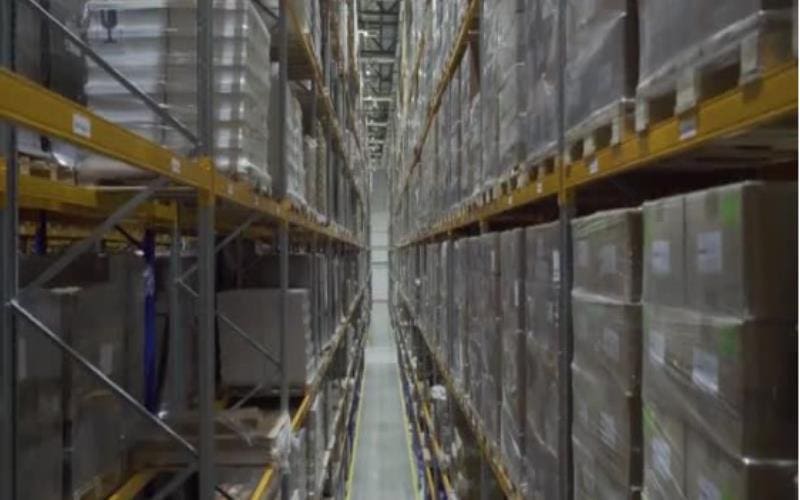In the ever-evolving landscape of supply chain management, the optimization of warehouse storage has emerged as a pivotal component in ensuring the seamless flow of goods and materials. Warehouses, once considered mere storage spaces, have transformed into dynamic hubs of efficiency and sustainability. This article delves into the intricacies of warehouse storage, exploring innovative techniques and technologies that are reshaping the industry while maintaining a delicate balance of complexity and uniformity.
The Changing Dynamics of Warehousing
Historically, warehouses were cavernous spaces where products were shelved with little thought to organization or accessibility. However, the modern supply chain demands a more refined approach. Today, warehouse storage in Singapore is all about precision and adaptability.
One key aspect contributing to the perplexity of modern warehousing is the implementation of automated systems. These systems utilize advanced algorithms and robotics to efficiently manage inventory. Items are stored and retrieved with an almost dance-like precision, reducing the need for human intervention and minimizing errors.
Burstiness in warehousing manifests in the diverse range of storage solutions employed. No longer limited to static shelving, warehouses now incorporate a plethora of storage options. Let’s explore some of the cutting-edge strategies reshaping the warehousing landscape.
Vertical Storage Systems
Traditional warehouses often squandered vertical space, leading to inefficiencies in storage. However, the advent of vertical storage systems has revolutionized this aspect. These systems use automated cranes or robots to access and retrieve items stored on high shelves, maximizing the use of vertical space while maintaining accessibility.
Shuttle Systems
Shuttle systems have introduced a new level of burstiness to warehouse storage. These automated robots are designed to carry items within the storage facility, reducing the need for manual labor and speeding up the retrieval process. The flexibility of shuttle systems allows for efficient storage of items of various sizes, making them an invaluable addition to modern warehouses.
Mobile Racking Systems
For those seeking to enhance storage density while maintaining accessibility, mobile racking systems offer an intriguing solution. These systems use movable racks that can be compacted or expanded based on the requirements. This burst of adaptability allows for a significant increase in storage capacity within the same footprint.
Goods-to-Person Systems
In the quest for greater burstiness, the concept of “goods-to-person” systems has gained prominence. Rather than having workers navigate the warehouse to retrieve items, these systems bring the items directly to the workers. Automated robots or conveyors transport products to a designated workstation, significantly reducing picking times and increasing efficiency.
Data-Driven Warehousing
Perplexity in warehousing is also driven by the integration of data analytics and machine learning. Warehouses are now equipped with sensors and cameras that continuously monitor inventory movement. This real-time data is analyzed to optimize storage layouts and predict demand patterns, ensuring that items are always stored in the most efficient locations.

Sustainability in Warehouse Storage
While complexity and burstiness are essential in modern warehousing, sustainability has become equally crucial. As environmental concerns grow, warehouses are adapting to minimize their carbon footprint.
One approach to sustainable warehousing is the incorporation of energy-efficient technologies. LED lighting, solar panels, and smart HVAC systems are all being used to reduce energy consumption and minimize environmental impact.
Additionally, many warehouses are adopting green building practices. Utilizing sustainable materials, improving insulation, and implementing rainwater harvesting systems are just a few examples of how warehouses are becoming more environmentally friendly.
Furthermore, burstiness in sustainability can be seen in the creative solutions that warehouses are implementing to reduce waste. Many are rethinking their packaging materials to reduce excess plastic and promote recyclability. Others are exploring innovative recycling programs within their facilities.
Conclusion
The world of warehouse storage has undergone a profound transformation, with complexity and burstiness playing central roles in its evolution. From automated systems that optimize storage and retrieval to a diverse range of storage solutions, modern warehouses are dynamic hubs of efficiency. Moreover, the push for sustainability has added another layer of complexity, as warehouses seek to reduce their environmental impact.
As we look to the future, the warehouse storage industry will undoubtedly continue to innovate. The quest for greater perplexity and burstiness will drive the development of new technologies and strategies, ensuring that warehouses remain at the forefront of supply chain management.
In this era of revolutionized warehouse storage, one thing is clear: the complexities and variations in warehousing are not merely trends but essential components in the ongoing quest for efficiency and sustainability in the supply chain.

